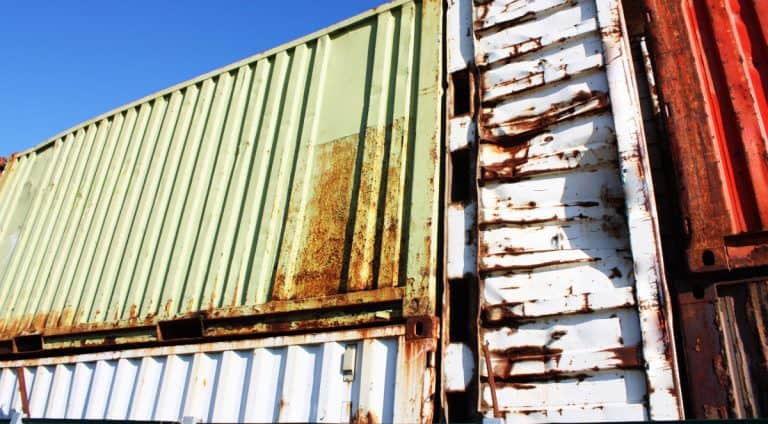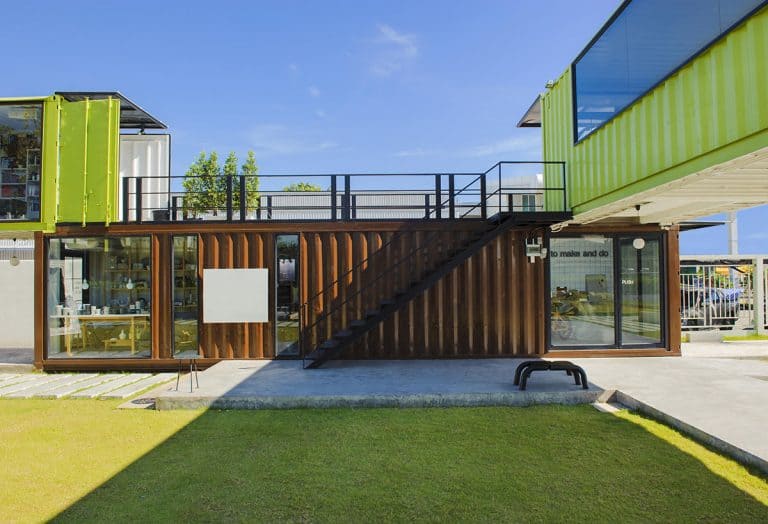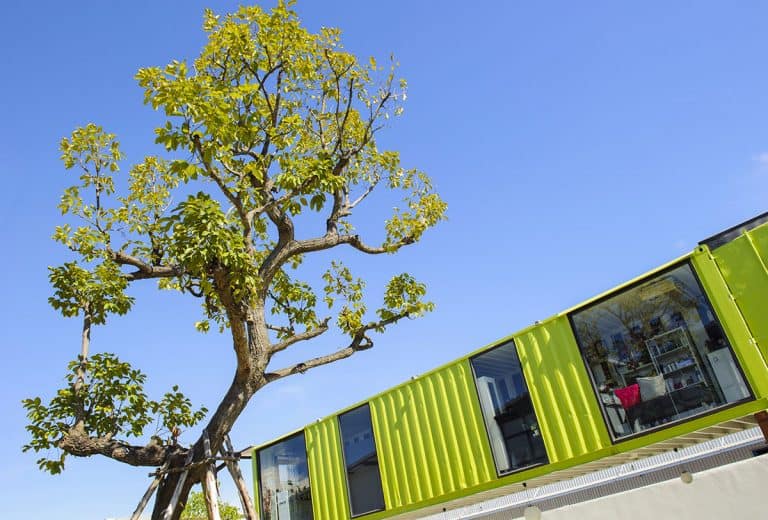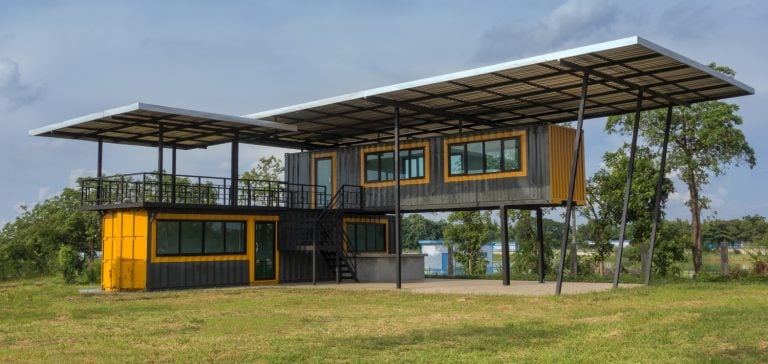Why are Container Homes so Expensive?
Someone recently asked me why container homes are so costly. He had been looking to build one as a vacation cabin but was put off by the price sticker of almost $100,000. Why would a building made from recycled materials be so costly, and what can be done to lower that cost?
Container houses are expensive because of the specialized labor involved. However, building materials are relatively inexpensive, and the cost of a container home can be very low, provided you build it yourself.
Let’s review container homes’ costs in more detail and go through what we can do to minimize that cost.
How Much does a Container Home Cost?
The typical price for a 2,000 square foot container home is $40 per square foot if you build it yourself and $140 per square foot if professional builders are hired.
Compare that to the cost of $120 per square foot for a new custom-built single-family house and a median cost of $123 for an existing home. This does make container homes somewhat expensive to build.
These are estimates and averages, though, and the final price will vary depending on several factors, such as location, design requirements, and build quality. A container house can be a lot more expensive but also much cheaper than a traditional home.
Why the Price Difference?
Labor plays a very significant part in the cost of building a container home. This is in large part because container homes require specialized labor. Very few craftsmen have built container homes, and bricklayers and carpenters are not experienced with metalwork and welding.
Also, even a craftsman who would be able to build your container home may not want to take on the task. This is as they could be liable if your home has unexpected issues (such as rust) later on.
Another factor that increases the cost of particularly smaller container cabins is the high start-up costs. Smaller cabins are cheaper than large container homes because of their size but will often cost much more per square foot. This is because start-up costs will not increase linearly according to how big you want your home.
When hiring a craftsman you usually pay an hourly minimum to compensate for transportation, setting up equipment, etc. Thus, hiring someone for a few hours will often cost a lot more per hour than hiring them for the entire day.
Other start-up costs include:
- Transportation of trailer to the location
- Architect fees
- Service connections to municipal and public utilities
- Drainage
- Approval and permit fees
Most of these costs will be more or less the same regardless of the building’s size, consequently increasing the cost per square foot for smaller homes.
How to Build a Cheap Container Home
Now that we have a pretty good idea of what goes into the cost of container homes, we can also find out how to construct a very affordable one.
1. DIY
As mentioned, labor is the main reason why container houses are expensive. By doing it yourself, you may save around 70% of the total costs.
Of course, building a container house is not done in an afternoon, and it is not an easy task. Hence the high labor costs. Unless you are already an experienced builder, you will benefit from getting at least some professional consultation, especially regarding necessary safety measures and structural integrity.
That being said, if you don’t mind working hard and probably make a few mistakes along the way, doing it yourself will save you a lot of money. The lost cost of materials can easily make a small container cabin much more affordable and less work than wooden cabins – log cabins in particular.
This is especially true for simple one-story constructions with few details and smaller container homes, like cabins and tiny container houses. These are much easier to build yourself, making DIY is a very appealing option.
2. Buy Used Containers
Used containers are much cheaper than new containers. However, very old containers may cost more money to restore than less used containers. It’s important to consider the cost of restoring an old container versus buying new or like-new containers.
Below are typical prices for 40-foot containers.
- New: $6,500
- One-trip: $4,100
- Used: $2,200
- Very used: $1.000
New containers are not very common. Almost all containers are produced in China, and it is not a viable business model to ship them here empty and under great care to tell them as new when instead they can be used to transport goods and then sold at a discount. However, US container manufacturers do exist, and it is possible to get an entirely new container if you so desire.
One-trip containers have only once been used for shipping purposes. They are employed for one shipment from abroad and then sold on for other uses, such as container homes. One-trip containers are sold at a significant discount compared to entirely new containers while still in almost new conditions.
Used shipping containers have been used multiple times, often as much as 10 or 12 years before they are retired. They usually look much less appealing than one-trip containers but are also much cheaper. The condition of used containers varies a lot, and you should inspect them well before making a purchase.
Very used containers have been first used as shipping containers and later for other purposes. They are often in very bad conditions, and fixing them up (if at all possible) will require a lot of time and effort, including extensive welding work. While the low price point is appealing, only buy a very used container if you know exactly what you are doing.
Which is Cheaper?
Frugal container home builders will usually be looking for used containers, as they will cost about half as much as one-trip containers. If you are looking at used containers, make sure to consider the cost, time, and effort to restore them.
Also, consider the cost of delivery. Having a container delivered within a distance of about 50 miles will usually cost several hundred dollars and an additional $2 per mile for further deliveries. It may well be worth it to buy used one-trip containers locally if the only good used containers are located further away.
3. Source for Cheap Materials
You will need many other materials to build a container home. Such as:
- heating
- cooling
- doors
- windows
- ventilation
- flooring
- wall finish and siding
- insulation
- paint
- roofing
These materials can easily cost tens of thousands of dollars. Luckily, there are many ways to obtain building materials for free or very cheap, such as looking for demolition listings, buying mistake orders, and many other ways.
With some creativity and a bit of footwork, it is possible to cut the cost by more than 50% compared to new materials.
4. Embrace The Industrial Look
Some container homes are hidden behind exterior wall siding, making them look a lot like traditional houses in the cubist style. But why not welcome the somewhat rough, industrial container look and save some money, too?
Quality container finish is not cheap, and by showing off your steel home, you maintain the containers’ history and provide an alternative to the many ordinary homes. This can be done by:
- Not painting the containers but maintaining the original color
- Not adding exterior wall finishes or exterior siding
- Pouring concrete floors or using the original plywood flooring
- Making a simple roof that doesn’t require a lot of welding, labor ad structural expertise
5. Have a Plan But Remain Flexible
Always make a detailed budget before starting a construction project. The budget should include:
- Cost of containers, including delivery and restoration.
- All other building materials and their prices
- Price quotes for all the tasks you may not be able to do yourself, such as electrical, lateral pipes, etc.
- Costs of obtaining permits and approvals
- Cost of renting a temporary home during construction
Make sure the budget is not overly optimistic. It’s better to get pleasantly surprised than having to scrape for money that was not initially in the budget.
Make a design plan describing the physical look and dimensions of your container home. But be open to adapting it to available materials. I.E., if you get a good deal on windows that may not suit your initial plan, consider how they can be integrated into your dream home and still look good.
But, of course, don’t start cutting and welding until you know exactly what to do and have all the necessary materials on hand.






